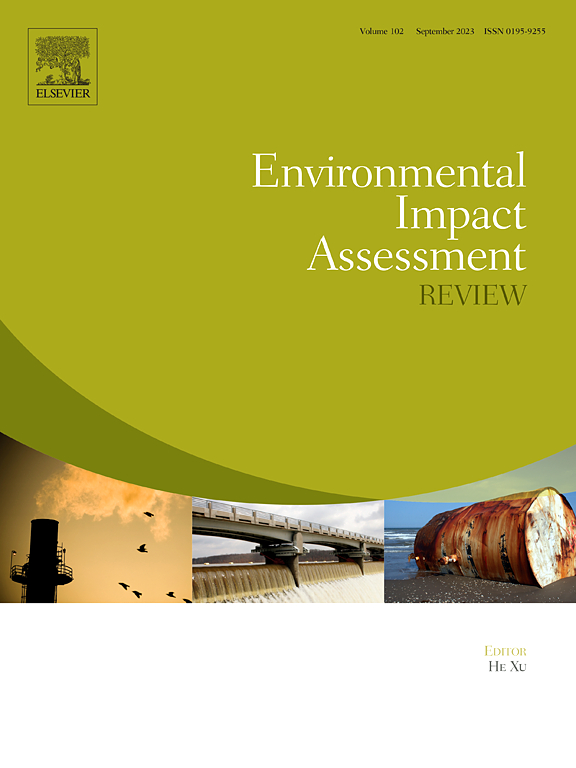A multifaceted assessment and response framework for land use-based carbon metabolism: From Intra-City to Inter-City dynamics
IF 9.8
1区 社会学
Q1 ENVIRONMENTAL STUDIES
引用次数: 0
Abstract
Carbon metabolism, a fundamental process in regulating the Earth's climate, is profoundly influenced by land use changes and is essential for developing strategies to mitigate global warming. This study formulates a three-pronged theoretical framework for assessing and responding to land use-based carbon metabolism. To address the limitations of existing research confined by jurisdictional boundaries, this framework designs a dual-node carbon metabolism network based on land uses and cities, thereby transitioning the research paradigm from intra-city analysis to regional integration. This approach reveals the intertwined impacts of land use changes and inter-city interactions on carbon metabolism while offering insights into how urban ecological relationships shape regional carbon environments. Moreover, it expands the temporal span of carbon metabolism assessment, incorporating both the retrospective evaluation for 1995–2020 and simulations of carbon evolution across different nodes in 2030. Concentrating on the Hangzhou metropolitan area in China, the study indicates that carbon metabolism exhibits uneven patterns across various dimensions. For carbon exchange between terrestrial and atmospheric systems, carbon emissions reached 49.79 × 108 t in 2020, while carbon sequestration was only 218.88 × 104 t. For terrestrial carbon exchanges, carbon flows are more responsive to inter-city interactions than to land use changes. The dominant Control/Exploitation ecological relationship elucidates that the environmental benefits of land use changes and inter-city linkages have yet to be maximized. From a long-term perspective, intervening in and balancing inter-jurisdictional land use patterns during the transition of decarbonization is necessary. Through developing this practical and replicable framework, this study identifies pivotal strategies for low-carbon development at the city-regional scale, aiding in a deeper and multi-dimensional understanding of urban carbon assessment.
基于土地利用的碳代谢的多方面评估和响应框架:从城市内部到城市间动态
碳代谢是调节地球气候的一个基本过程,受到土地利用变化的深刻影响,对于制定减缓全球变暖的战略至关重要。本研究为评估和响应基于土地利用的碳代谢制定了一个三管齐下的理论框架。为了解决现有研究受地域限制的局限性,该框架设计了一个基于土地利用和城市的双节点碳代谢网络,从而将研究范式从城市内部分析过渡到区域整合。该方法揭示了土地利用变化和城市间相互作用对碳代谢的交织影响,同时为城市生态关系如何塑造区域碳环境提供了见解。此外,该研究扩大了碳代谢评估的时间跨度,纳入了1995-2020年的回顾性评估和2030年不同节点的碳演化模拟。以中国杭州都市圈为研究对象,研究表明碳代谢在不同维度上呈现不均匀模式。2020年陆地与大气系统碳交换的碳排放量达到49.79 × 108 t,而固碳量仅为218.88 × 104 t。对于陆地碳交换,碳流对城市间相互作用的响应大于对土地利用变化的响应。占主导地位的控制/开发生态关系表明,土地利用变化和城市间联系的环境效益尚未得到最大化。从长远来看,在脱碳转型过程中,干预和平衡跨区域土地利用模式是必要的。通过开发这一实用且可复制的框架,本研究确定了城市-区域尺度低碳发展的关键战略,有助于对城市碳评估进行更深入和多维的理解。
本文章由计算机程序翻译,如有差异,请以英文原文为准。
求助全文
约1分钟内获得全文
求助全文
来源期刊

Environmental Impact Assessment Review
ENVIRONMENTAL STUDIES-
CiteScore
12.60
自引率
10.10%
发文量
200
审稿时长
33 days
期刊介绍:
Environmental Impact Assessment Review is an interdisciplinary journal that serves a global audience of practitioners, policymakers, and academics involved in assessing the environmental impact of policies, projects, processes, and products. The journal focuses on innovative theory and practice in environmental impact assessment (EIA). Papers are expected to present innovative ideas, be topical, and coherent. The journal emphasizes concepts, methods, techniques, approaches, and systems related to EIA theory and practice.
 求助内容:
求助内容: 应助结果提醒方式:
应助结果提醒方式:


